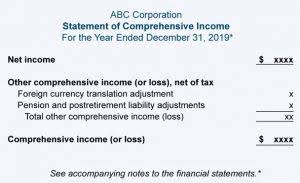
Even if a company produces only one product, that product will have different cost values depending upon when they produce it. When inventory is acquired and when it’s sold have different impacts on inventory value. Cost of Goods Sold, or COGS, is the amount of money a business pays to produce the number of goods sold in a given period. The products that are left in the warehouse are called remaining inventory. With the FIFO method, the stock that remains on the shelves at the end of the accounting cycle will be valued at a price closer to the current market price for the items. It’s a method of inventory management and valuation in which goods produced or acquired first are sold, used, or disposed of first.
Differences between FIFO and LIFO
This can create challenges for multinational corporations that operate in both IFRS and U.S. GAAP environments, as they must reconcile different inventory accounting methods for consolidated financial reporting. LIFO, on the other hand, offers a strategic tax advantage by aligning the cost of goods sold with current market prices.

Improve Inventory Management with FreshBooks
This is because the IRS requires companies to pay taxes on the difference between the LIFO and FIFO inventory values, known as the LIFO reserve. This can be a significant financial burden, particularly for companies with large inventories. If inflation were nonexistent, then all inventory valuation methods would produce the same results. When prices are stable, the bakery from our earlier example would be able to produce all of its bread loaves at $1, and LIFO and FIFO would both give us a cost of $1 per loaf.
- In other words, the cost of the newest products is counted in the COGS, whereas the price of older goods is counted in inventory.
- For example, a grocery store purchases milk regularly to stock its shelves.
- Ng offered another example, revisiting the Candle Corporation and its batch-purchase numbers and prices.
- FIFO leaves the newer, more expensive inventory in a rising-price environment, on the balance sheet.
- On the other hand, LIFO can lead to lower ending inventory values, which might be less favorable for financial reporting but beneficial for tax purposes.
- The methods are LIFO, FIFO, Simple Average, Base Stock, and Weighted Average, etc.
Why should you not choose LIFO?
- When new stock comes in, the older items are moved to the front so they’re sold first.
- Milk cartons with the soonest expiration dates are the first ones sold; cartons with later expiration dates are sold after the older ones.
- LIFO better matches current costs with revenue and provides a hedge against inflation.
- In the FIFO method, the initial purchasing cost is subtracted from its selling price to calculate the reported profit.
- The pros and cons listed below assume the company is operating in an inflationary period of rising prices.
Your chosen system can profoundly affect your taxes, income, logistics and profitability. The right accounting software helps you track your inventory values so you can quickly and easily calculate costs. FreshBooks accounting software lets you organize inventory costs, keep track of shipments, and organize invoices so you can stay on top of vendor payments. Try FreshBooks free to CARES Act discover how streamlining your inventory process can help you grow your small business today. Cost of goods sold is an expense for a business, meaning it will also have tax implications. This produces a higher taxable income, so a business will typically have to pay more in taxes.

Consequently, this can lead to higher gross profits and net income, which may appeal to investors and stakeholders looking for strong financial performance. Another significant difference lies in how these methods impact inventory valuation. FIFO typically results in higher ending inventory values during periods of inflation, as the remaining inventory is valued at more recent, higher costs. This can enhance the appearance of a company’s balance sheet, making it look more financially robust.
FIFO vs. LIFO: How to Pick an Inventory Valuation Method
Ng offered another example, revisiting the Candle Corporation and its law firm chart of accounts batch-purchase numbers and prices. We collaborate with business-to-business vendors, connecting them with potential buyers. In some cases, we earn commissions when sales are made through our referrals. These financial relationships support our content but do not dictate our recommendations. Our editorial team independently evaluates products based on thousands of hours of research. Despite increasing production costs, Company A retains a consistent sales price of $400 per vacuum.
There are other inventory valuation methods which you may consider using. Specific fifo lifo Identification (SI) tracks the cost of each specific item of inventory. As such, it can be cumbersome and is often reserved for high-value or unique, made-to-order items.
- However, if the prices are high the same condition will get reversed and as a result, it is not easy to order the same quantity of materials without having sufficient funds.
- FIFO is mostly recommended for businesses that deal in perishable products.
- Let’s say you own a craft supply store specializing in materials for beading.
- There are balance sheet implications between these two valuation methods.
- Conversely, LIFO, or Last-In, First-Out, operates on the assumption that the most recently acquired inventory is sold first.
- No, the LIFO inventory method is not permitted under international financial reporting standards (IFRS).
What is inventory, and how is it valued?
With this method, your product’s final cost is based on the price you paid for the oldest inventory. FIFO inventory valuation is great for businesses that deal with perishable goods or products that can quickly lose value, such as food products or tech gadgets. If you are looking to do business internationally, you must keep IFRS requirements in mind. If you plan to do business outside of the U.S., choose FIFO or another inventory valuation method instead.
Weighted Average vs. FIFO vs. LIFO: An Overview

No, the LIFO inventory method is not permitted under international financial reporting standards (IFRS). Both the LIFO and FIFO methods are permitted under generally accepted accounting principles (GAAP). When a company selects its inventory method, there are downstream repercussions that impact its net income, balance sheet, and its requirements for tracking inventory. The pros and cons listed below assume the company is operating in an inflationary period of rising prices. During a period of rising prices, the most expensive items are sold with the LIFO method. This means the value of inventory is minimized, and the value of COGS is increased.
